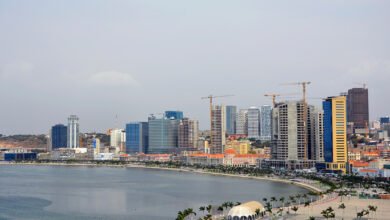
Fitch Ratings has downgraded Kenya’s Long-Term Foreign-Currency Issuer Default Rating (IDR) to ‘B-‘ from ‘B’, while maintaining a Stable Outlook.
This downgrade highlights the growing risks to Kenya’s public finances and reflects several critical factors impacting the nation’s economic stability.
Heightened Financial Risks
The downgrade by Fitch Ratings comes in the wake of the Kenyan government’s decision to retract revenue measures included in the Finance Bill 2024, a move triggered by widespread violent social protests.
The increase in domestic debt costs, coupled with this backtrack, has raised alarms over the country’s fiscal health.
Despite efforts to cut expenditure, Fitch notes a moderately increased risk to external financing, exacerbated by elevated external commercial borrowing costs and foreign-exchange reserves that are below the ‘B’ median.
Stable Outlook Amid Fiscal Challenges
Despite the downgrade, Fitch maintains a Stable Outlook for Kenya. The rating agency anticipates that robust support from official creditors will help mitigate immediate external liquidity pressures. However, Fitch also acknowledges that Kenya’s funding needs will remain substantial and are expected to increase.
The tightening of monetary policy is projected to anchor inflation and support the Kenyan shilling. Nonetheless, achieving fiscal targets is becoming increasingly challenging for the authorities.
Socio-Political Turmoil
The socio-political landscape in Kenya has been marked by violent protests in response to proposed tax hikes in the Finance Bill 2024 and calls for governance reforms.
Also Read: Fitch Ratings downgrades Kenya’s Credit Rating to Negative
President William Ruto’s decision to withdraw the bill and his efforts to form a broad-based government after dismissing the previous cabinet in July 2024 have aimed to address these issues.
However, Fitch warns that the risk of prolonged social unrest persists, complicating the environment for fiscal consolidation and posing downside risks to economic activity.
Wider Fiscal Deficit and Rising Debt
Fitch projects a widening of Kenya’s fiscal deficit to 4.7% of GDP for the financial year ending June 2025 (FY25), which is 0.5 percentage points higher than the government’s revised plan.
The withdrawal of planned revenue measures, coupled with higher debt servicing and social spending costs amid civil pressures, are major contributors to this deficit. Revenue is expected to continue underperforming, with only a modest narrowing of the deficit to 4.3% of GDP in FY26.
Fiscal slippage remains a concern, with the FY24 budget deficit reaching 5.6% of GDP, 1.2 percentage points higher than budgeted. This was due to higher spending and shortfalls in tax revenue.
Additionally, revenue shortfalls have led to increased reliance on more expensive borrowing from external commercial creditors and the domestic market, with rising interest payments projected to reach 31.7% of revenue in 2025 and 32.8% in 2026, significantly higher than the median forecast for ‘B’ category peers.
Debt Levels and Economic Outlook
Kenya’s government debt-to-GDP ratio rose to nearly 72% in FY23, up from 67% in FY22, partly due to currency depreciation. Fitch estimates a decline in the debt-to-GDP ratio to 66.4% in FY24, linked to a stronger shilling in the latter half of FY24.
The ratio is expected to decline marginally to 65.6% by the end of FY26, driven by strong nominal GDP growth. However, this remains above the projected 2025 ‘B’ median of 51.5%.
In conclusion, while Kenya faces significant fiscal and socio-political challenges, the country’s ability to navigate these issues will be crucial in determining its economic trajectory. The Fitch downgrade underscores the need for effective fiscal management and socio-political stability to ensure long-term economic health.






I have recently started a website, the information you provide on this web site has helped me tremendously. Thanks for all of your time & work.
fantástico este conteúdo. Gostei muito. Aproveitem e vejam este conteúdo. informações, novidades e muito mais. Não deixem de acessar para aprender mais. Obrigado a todos e até a próxima. 🙂
I dugg some of you post as I cerebrated they were invaluable very beneficial
An impressive share, I just given this onto a colleague who was doing a little analysis on this. And he in fact bought me breakfast because I found it for him.. smile. So let me reword that: Thnx for the treat! But yeah Thnkx for spending the time to discuss this, I feel strongly about it and love reading more on this topic. If possible, as you become expertise, would you mind updating your blog with more details? It is highly helpful for me. Big thumb up for this blog post!
Can I just say what a relief to find someone who actually knows what theyre talking about on the internet. You definitely know how to bring an issue to light and make it important. More people need to read this and understand this side of the story. I cant believe youre not more popular because you definitely have the gift.
You made some clear points there. I looked on the internet for the issue and found most guys will approve with your blog.
I got what you mean ,saved to fav, very decent website .
Excellent website. Lots of helpful information here. I’m sending it to a few pals ans also sharing in delicious. And of course, thanks to your sweat!
Great goods from you, man. I’ve understand your stuff previous to and you are just extremely great. I actually like what you’ve obtained here, certainly like what you’re stating and the way by which you assert it. You’re making it entertaining and you continue to take care of to stay it wise. I cant wait to learn far more from you. That is really a terrific web site.
Howdy! I could have sworn I’ve been to this blog before but after checking through some of the post I realized it’s new to me. Anyways, I’m definitely glad I found it and I’ll be bookmarking and checking back frequently!
I’ve been surfing on-line more than 3 hours nowadays, but I by no means found any attention-grabbing article like yours. It’s pretty value sufficient for me. In my view, if all web owners and bloggers made just right content material as you probably did, the internet might be a lot more useful than ever before. “We are not retreating – we are advancing in another Direction.” by Douglas MacArthur.
You can certainly see your enthusiasm in the work you write. The world hopes for more passionate writers like you who aren’t afraid to say how they believe. Always follow your heart.
What i don’t understood is in fact how you are no longer actually much more neatly-favored than you might be now. You’re so intelligent. You recognize thus considerably with regards to this matter, produced me personally imagine it from numerous varied angles. Its like women and men aren’t involved except it’s one thing to accomplish with Lady gaga! Your own stuffs great. At all times take care of it up!
I conceive you have noted some very interesting details , regards for the post.
Undeniably consider that which you stated. Your favorite justification seemed to be at the web the simplest thing to take note of. I say to you, I certainly get irked even as folks think about worries that they just don’t recognise about. You managed to hit the nail upon the highest and also defined out the whole thing without having side-effects , other people can take a signal. Will probably be back to get more. Thanks
I’m really enjoying the theme/design of your web site. Do you ever run into any browser compatibility issues? A small number of my blog visitors have complained about my website not working correctly in Explorer but looks great in Firefox. Do you have any advice to help fix this issue?
Together with the whole thing which seems to be developing throughout this specific subject matter, a significant percentage of viewpoints are generally very exciting. Nevertheless, I am sorry, but I do not subscribe to your entire plan, all be it exciting none the less. It looks to me that your opinions are not entirely rationalized and in actuality you are generally yourself not wholly confident of your argument. In any case I did appreciate examining it.
Good write-up, I?¦m regular visitor of one?¦s web site, maintain up the excellent operate, and It is going to be a regular visitor for a long time.
hello there and thank you to your info – I’ve certainly picked up something new from proper here. I did however expertise several technical points using this site, since I experienced to reload the web site lots of instances previous to I could get it to load correctly. I have been puzzling over if your web host is OK? Now not that I am complaining, but sluggish loading circumstances instances will often affect your placement in google and can damage your high quality score if advertising and ***********|advertising|advertising|advertising and *********** with Adwords. Well I am including this RSS to my email and can glance out for a lot extra of your respective fascinating content. Make sure you replace this once more soon..